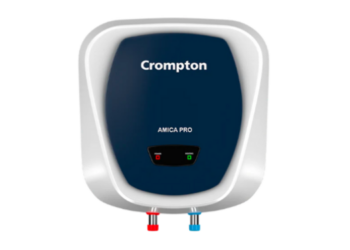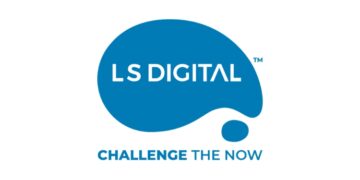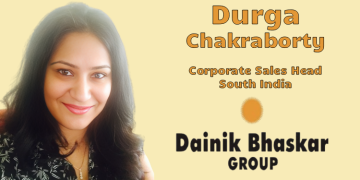In a tough business environment when demand in core market gets challenged, businesses should look at tapping adjacencies which leverage the organizations foundational assets. Not only are these moves less risky, they also do not call for much by way of upfront investments.
Search for revenue without budgets
The conventional rule in a crises business situation is to focus on current customers and existing markets and forget about new customers and markets. But sometimes demand in the core market dries up so severely that businesses are forced to lookout. Unlike the normal situation where there is a significant innovation & marketing budget, this forced search for revenue has to be done without much budgets.
Foundational assets, adjacencies and customer value
When you are forced to search for revenue beyond your core market without the big budgets, start with your customer and market adjacencies. Be laser-focused on what value your product creates for the customers and ensure that it is not too risky for the business. By leveraging the organizations’ foundational assets, it becomes less risky and demanding on the capital front. In a challenging economic environment value consciousness of the customers goes up and if you are not genuinely solving a problem for your customers, they will not consider your brand. This problem solving for the customer could be in the form of time and money-saving, affordability, revenue generation, overcoming major obstacles or help in achieving a major goal.
Core market opportunities
Before you venture into adjacent or even experiment with new business models, you need to ensure that you have not missed any opportunity in your current product portfolio. You have to remember that in your core market, audiences will be familiar with your brand and creating extensions or variations will be the safest bet. Tactics like smaller packs, improved value messaging should work. Even though this is the most reliable bet, refreshing a mature brand with new benefit claims to renew interest, increase relevance and dial-up value orientation is a difficult task. In our work with an FMCG player in the skincare space, our research opened up product benefit spaces and new benefit claims, which increased the value of the brand in the consumers’ mind. Also, research pointed out portfolio gaps which are easy wins without much investment as the brand was already established and commanded considerable retail shelf space.
Adjacent opportunity – new customers
Adjacencies can take two forms. One which involves no change in the business system and products (but targets new customers) and the other which involves slight tweaking of the business systems and model (targets existing customers). Let’s take the first one where there is no change. Here you are creating new benefits for charging a slight premium or even eliminating some features to create a value offering. Take for instance the private label strategy followed by retailers with ‘Good’, ‘Better’ & ‘Best’ or business moves like Taj’s Ginger Hotels in India & Planet fitness (Gym) in the US market. Both these brands took way all the frills associate with the category in which they operate, made it affordable and targeted a new segment of customers. Planet Fitness cut down high-cost features like personal trainers, speciality training classes like yoga, reduced free weights and increased cardio machines and created a system where people pay for some equipment’s that they use. With a reduced cost structure, they were able to attract a new set of value-conscious customers. Currently, Planet Fitness is one of the most successful gyms in the US. Remember one of the critical parts of a move like this is to determine which needs are essential for the customer and what can be eliminated with sacrificing satisfaction. This exercise should not be based on guesswork and should be based on sound business rationale.
Adjacent opportunity – existing customers, new business models & channels
The next form of adjacencies is, which involves slight tweaking of the business model to make your product more affordable, inclusion of new channels of sales like digital or is some cases going direct to consumers. This could include fractionalizing, converting into ‘product as a service’, long term leasing, pay per piece, digital enablement etc. This kind of moves are found more in high CAPEX industries like building & medical equipment, automobiles, farm equipment, businesses where customers are hesitant to buy an entire package but would instead buy it a-la-cart and where products can be digitized or sold digitally. Eg. a single news story against a whole subscription. Remember Hyundai’s buyback guarantee in the 2008 recession period which was a big success. The basis of this strategy is to make it affordable for the buyer, reduce their operational cost and even enable digital buying or sales. For a drone manufacturer, our recommendation was to offer their product as a service. With this move, their customer does not have to pay upfront. They save on the operational coast as they do not have to pay for employees and maintenance. To enable this experiment, we suggested to the manufacturer to go in for build, operate, transfer sort of arrangement as even their overhead can be controlled.
Leveraging foundational assets to tap new opportunities
The fourth move is to leverage the existing organizational foundational assets to create and sell a new product to a new segment of consumers. Remember, here there is no massive investment, but the assets are utilized to manufacture and sell a new product to a new segment of consumers. For instance, during the COVID-19 time, a lot of FMCG players and premium perfumery brands got into hand sanitizer manufacturing both for social and well as commercial benefit. Cult Fit, the fitness brand from Flipkart got into the online exercising market more strongly, many software companies launched solutions for collaboration and listening to their employees, customers and vendors. In one of our work with a legacy gym business which was under threat due to the changing customer behaviour and high CAPEX structure, we pivoted the company into the mass weight loss segment by leveraging their foundational assets (this happened before the current crises).
Customer value, the key for revenue growth
Whatever moves you make in adjacencies, tweaking of the business model, selling to new or existing customers the starting point should be the customer and value you can offer them- Focus on the end-user and the metrics they use for evaluation and all else will follow. Never let guesses work, failing fast lead your thinking when money is scarce. Start with understanding customer needs and how their needs would have changed, understand metrics they use for evaluation and spot gaps in the market, quantify the degree of the struggle for customers, explore adjacencies and tweaking of the business model to increase revenue span and last used informed data models to make winning moves. Let’s aim to put an end to often heard statement like ‘for innovation you need big budgets and it can produce results only in long run’ and ‘you need to spend more in advertising to grow’.
Authored by Subash Franklin, He is Principal Consultant at Innomantra and leads their Growth & Innovation practice.
















